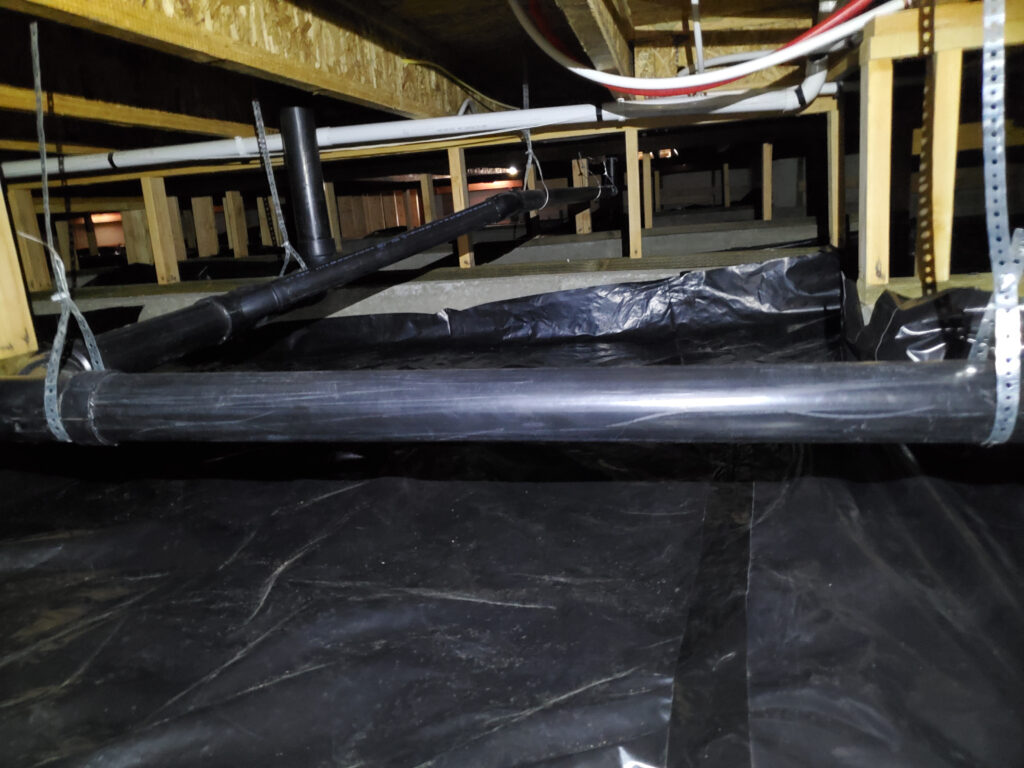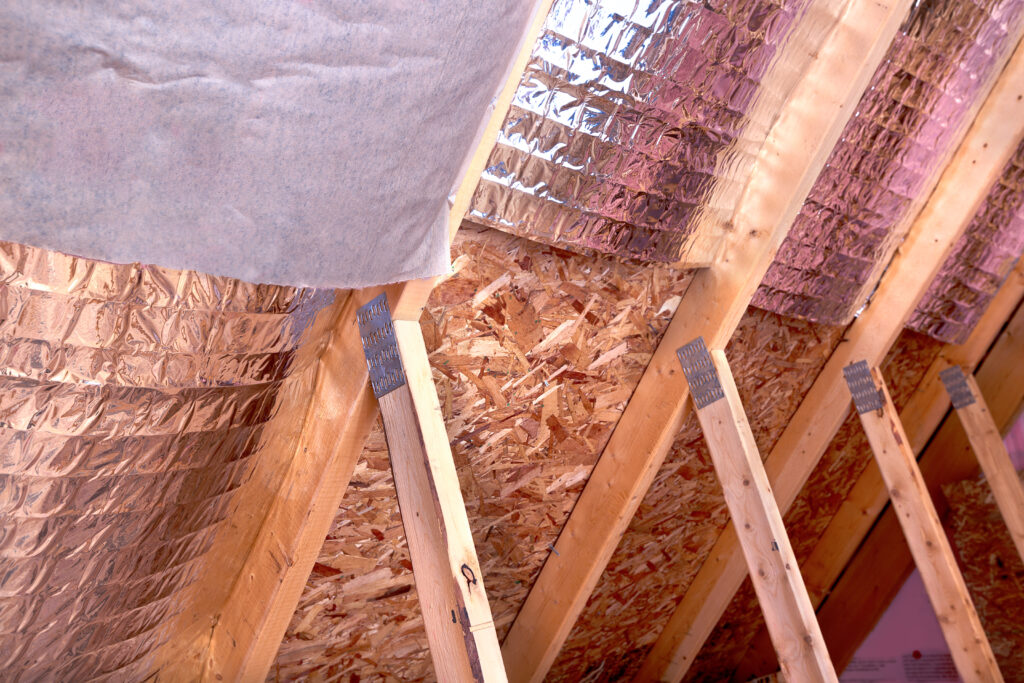Understanding Vapor Barriers
Understanding vapor barriers is crucial for maintaining the integrity of buildings and preventing moisture-related problems. Vapor barriers are materials used to slow down the movement of water vapor, not air, thus protecting structures from moisture damage. Key Points Definition of Vapor Barriers: Vapor barriers are materials such as polyethylene plastic sheets or aluminum foil designed to prevent the passage of water vapor. Moisture-Related Problems: Improper installation can lead to significant issues like mold growth and structural damage. What’s Covered in This Article: We’ll explore what vapor barriers are, their types, their role in building codes, installation best practices, and how to identify moisture-related problems. By understanding the importance of vapor barriers, homeowners and professionals can ensure proper installation and maintenance, ultimately leading to safer and more durable buildings. What is a Vapor Barrier? A vapor barrier is a material used to resist the diffusion of moisture through walls, ceilings, and floors. Its primary function is to prevent water vapor from infiltrating building materials which can lead to mold growth, structural damage, and a host of other moisture-related problems. Common Materials for Vapor Barriers Several materials are commonly used for creating effective vapor barriers: Polyethylene Plastic Sheet: Frequently used due to its durability and impermeability. Typically available in various thicknesses, with 6-mil being a common choice. Aluminum Foil: Offers excellent resistance to moisture and provides reflective insulation benefits. Elastomeric Coatings: Applied as liquid and cured to form a flexible but durable barrier. Asphalt-Coated Kraft Paper: Often found in batt insulation products as a facing material. Metallized Film: Combines the properties of plastic film with a thin metal coating to enhance moisture resistance. Vapor Retarder Paints: Specialized paints that add a moisture-resistant layer when applied to walls or ceilings. Extruded Polystyrene (XPS) Foam Board: Provides both thermal insulation and vapor resistance. Foil-Faced Foam Board Insulation: Combines the insulation properties of foam board with the reflective and moisture-resistant characteristics of aluminum foil. Each material has specific use cases depending on the building’s needs and climate considerations. Proper selection and installation are crucial for ensuring the barrier’s effectiveness in preventing moisture-related issues. For expert advice on such installations, you might want to consult professionals like those at Triangle Radiant Barrier, who specialize in this field. Types of Vapor Barriers Class-I Vapor Barrier Class-I vapor barriers are the most effective at preventing moisture transmission. These barriers are characterized by their very low perm rating, typically less than 0.1 perms. The following points delve into their definition, specific use cases, and importance in different climates: Definition A Class-I vapor barrier is a material with a perm rating of 0.1 or less. This extremely low permeability makes it highly effective at blocking water vapor from passing through, thereby protecting the building structure from moisture-related damage. Common Materials Polyethylene plastic sheets (commonly 6 mil thickness) Aluminum foil Glass Sheet-type roofing membranes Use Cases in Building Construction Basements and Crawlspaces: To prevent ground moisture from migrating into the living spaces. Exterior Walls in Cold Climates: To block moisture from entering wall cavities and forming condensation. Roofing Systems: To protect attic spaces from moisture accumulation, which can lead to mold growth and wood rot. Importance in Preventing Moisture in Colder Climates In colder climates, buildings are more susceptible to condensation issues due to the significant temperature differences between indoor and outdoor environments. Using Class-I vapor barriers can help mitigate these risks by ensuring that warm, moist indoor air does not meet cold surfaces where it can condense. Example: In climate zones 5 and above, using a Class-I vapor barrier on the interior side of exterior walls is crucial for preventing condensation within the wall assembly during winter months. Class-II Vapor Barrier Class-II vapor barriers have a slightly higher perm rating than Class-I but still provide substantial moisture protection. Definition A Class-II vapor barrier has a perm rating between 0.1 and 1.0 perms. Scenarios Where This Class is Appropriate Interior walls in buildings equipped with air conditioning systems Areas with fluctuating temperatures where some level of breathability is needed Example Use Cases Interior Walls with Air Conditioning (AC): To balance moisture control without over-restricting airflow. Mixed Climate Zones: Where buildings experience both heating and cooling seasons, requiring a versatile solution. Class-III Vapor Barrier Class-III vapor barriers offer moderate moisture control with higher permeability compared to Class-I and II barriers. Definition A Class-III vapor barrier has a perm rating between 1.0 and 10 perms. Appropriate Applications for Hot and Humid Environments Used in conjunction with spray foam insulation to allow limited moisture diffusion while still providing protection. Risks Associated with Incorrect Installations Improper installation can lead to insufficient moisture control, resulting in mold growth and structural damage. Ensuring correct placement and type selection is critical for optimal performance. Example: In hot and humid climates (zones 1-3), combining a Class-III vapor barrier with spray foam insulation helps manage humidity levels without trapping excessive moisture inside wall assemblies. By understanding the distinct characteristics and appropriate applications of these three classes of vapor barriers, builders can make informed decisions to ensure effective moisture management tailored to specific climatic conditions and building requirements. Class-II Vapor Barrier Class-II vapor barriers are a middle-ground solution between Class-I and Class-III vapor barriers. They allow some moisture to pass through, making them ideal for areas with changing temperatures and humidity levels. Characteristics of Class-II Vapor Barriers: Permeability Range:0 to 10.0 perms Common Materials: Kraft-faced fiberglass batts, vapor retarder paints, unfaced expanded polystyrene (EPS) foam board Typical Applications: Interior walls and ceilings in areas with seasonal variations in temperature and humidity Example Use Cases: Climate Zones 4 and 5: These zones experience both hot summers and cold winters, requiring a balance between moisture control and breathability. Basements & Crawl Spaces: In regions with moderate humidity, Class-II barriers help manage seasonal moisture variations without trapping excessive moisture within the structure. Understanding the differences between each class of vapor barrier is crucial for effective moisture management in building construction. Class-III Vapor Barrier Definition and Applications: Class-III vapor barriers are designed for use


